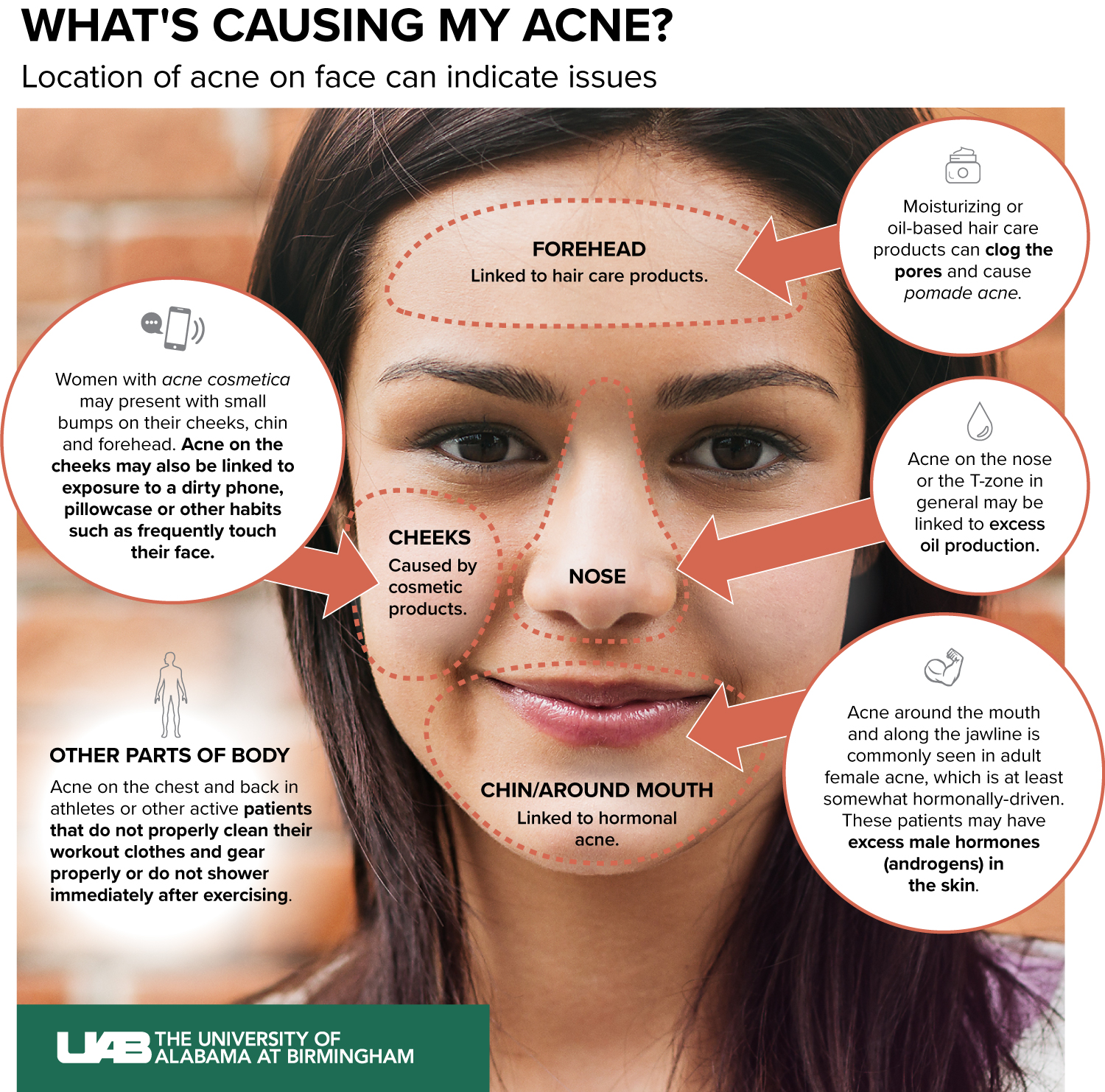Small pimples on face due to heat. Sweat Pimples vs. Heat Rash: Causes, Treatment, and Prevention for Clear Skin
What causes small pimples on face due to heat. How to differentiate between sweat pimples and heat rash. What are the best treatments for heat-induced skin issues. How to prevent skin breakouts caused by sweating and hot weather.
Understanding Sweat Pimples: Causes and Identification
Sweat pimples, also known as acne mechanica, are a common skin concern that often arises after intense physical activity or exposure to hot weather. These small, irritating bumps occur when sweat, heat, and friction combine to clog pores and trap bacteria on the skin’s surface.
What exactly causes sweat pimples to form? The primary culprits are:
- Excessive sweating
- Prolonged skin contact with sweat
- Friction from tight clothing or accessories
- Heat and humidity
- Buildup of bacteria on the skin
Sweat pimples typically appear in areas where sweat accumulates or where there’s constant friction, such as the forehead, chin, chest, back, and areas covered by tight-fitting clothing or equipment.

Identifying Sweat Pimples
How can you tell if those small bumps on your face are indeed sweat pimples? Sweat pimples often resemble regular acne and may present as:
- Small, red bumps
- Whiteheads
- Blackheads
- Pustules (pus-filled bumps)
They usually appear shortly after sweating or wearing tight, non-breathable clothing for extended periods.
Heat Rash: A Common Misdiagnosis for Sweat Pimples
Heat rash, also known as miliaria, is often confused with sweat pimples due to their similar appearance and causes. However, understanding the differences is crucial for proper treatment and prevention.
Types of Heat Rash
There are two main types of heat rash that can be mistaken for sweat pimples:
- Miliaria crystallina: Appears as small, clear, fluid-filled bumps on the skin’s surface
- Miliaria rubra: Presents as red, itchy bumps that can cause a prickling sensation
Unlike sweat pimples, heat rash is caused by blocked sweat ducts trapping perspiration under the skin. It’s more likely to occur in hot, humid conditions and typically affects larger areas of the body, such as the back, chest, and neck.
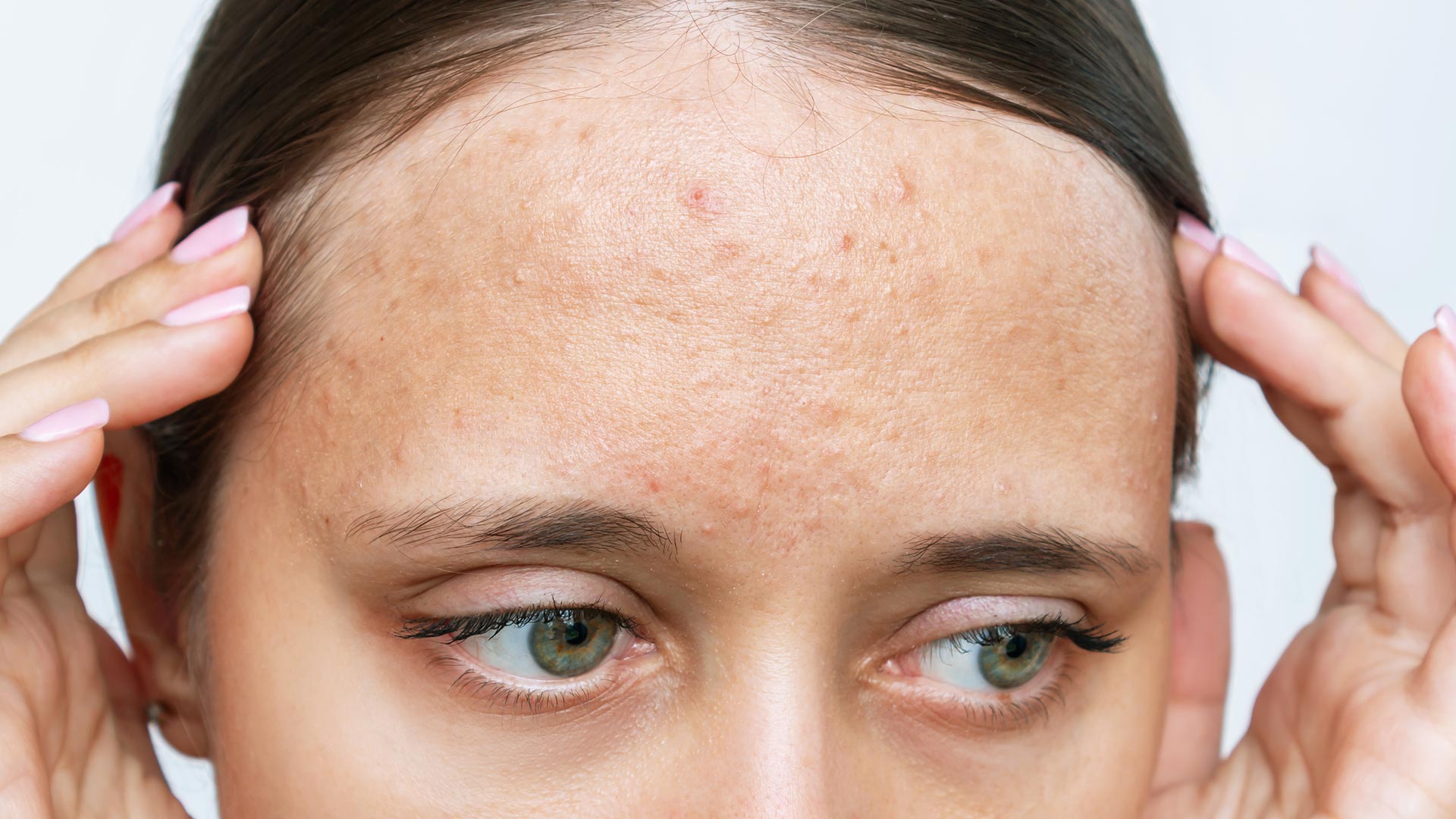
Effective Treatments for Sweat Pimples
Treating sweat pimples requires a gentle approach to avoid further irritation. Here are some effective strategies:
- Cleanse the affected area twice daily with a mild, non-comedogenic cleanser
- Apply over-the-counter acne medications containing ingredients like salicylic acid or benzoyl peroxide
- Use non-comedogenic, oil-free skincare products
- Avoid touching or picking at the pimples
- Regularly wash items that come into contact with acne-prone skin, such as pillowcases and workout gear
For persistent or severe cases, consulting a dermatologist may be necessary. They can prescribe stronger topical treatments or oral medications if needed.
Managing Heat Rash: Cooling Relief and Prevention
While heat rash often clears up on its own once the skin cools down, there are several ways to manage symptoms and prevent future occurrences:
- Move to a cooler, less humid environment
- Apply calamine lotion for itch relief
- Use anhydrous lanolin to soothe the skin
- Consider topical steroids for severe cases (under medical supervision)
- Wear loose-fitting, breathable clothing
- Take cool showers or baths
- Allow skin to air dry instead of using a towel
Avoiding ointments that can block pores is crucial in preventing heat rash from worsening or turning into sweat pimples.
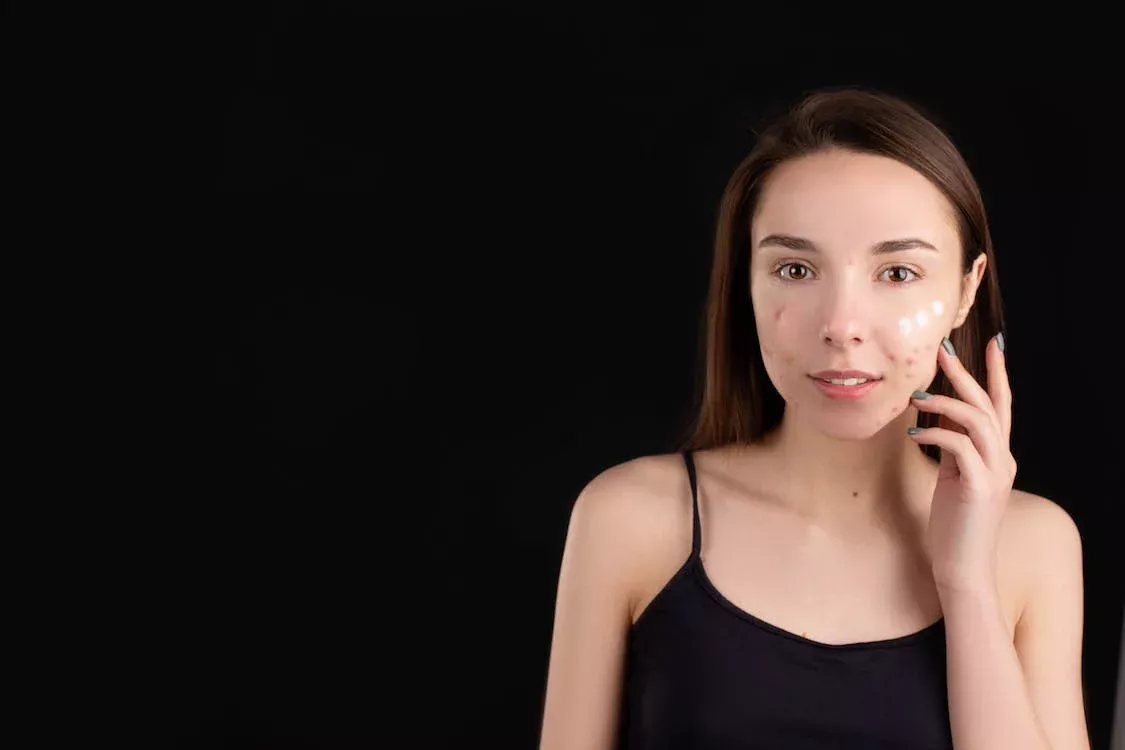
Preventive Measures for Both Sweat Pimples and Heat Rash
Taking proactive steps can significantly reduce the likelihood of developing both sweat pimples and heat rash. Consider implementing these preventive measures:
- Shower promptly after sweating, using an antibacterial soap
- Opt for moisture-wicking, breathable fabrics during physical activities
- Avoid tight-fitting clothes and accessories, especially in hot weather
- Stay hydrated to help regulate body temperature
- Seek cooler environments during the hottest parts of the day
- Use non-comedogenic sunscreen to protect skin without clogging pores
- Maintain a consistent skincare routine, adapting it for hot and humid conditions
By incorporating these habits into your daily routine, you can significantly reduce the risk of heat-related skin issues.
The Role of Diet and Hydration in Skin Health
While external factors play a significant role in the development of sweat pimples and heat rash, internal factors such as diet and hydration are equally important for maintaining healthy skin.

Hydration for Clear Skin
Proper hydration is crucial for overall skin health and can help prevent both sweat pimples and heat rash. How does staying hydrated benefit your skin?
- Helps regulate body temperature, reducing excessive sweating
- Supports the skin’s natural barrier function
- Aids in flushing out toxins that can contribute to breakouts
- Keeps skin cells plump and healthy, reducing the appearance of pores
Aim to drink at least 8 glasses of water a day, and increase your intake during hot weather or physical activity.
Skin-Friendly Diet Choices
Certain foods can help improve skin health and resilience against heat-related issues. Consider incorporating these into your diet:
- Omega-3 fatty acids (found in fish, flaxseeds, and walnuts) to reduce inflammation
- Antioxidant-rich fruits and vegetables to protect skin cells from damage
- Zinc-rich foods (like pumpkin seeds and lean meats) to support skin healing
- Probiotics to promote a healthy skin microbiome
Conversely, limiting sugar, dairy, and highly processed foods may help reduce the occurrence of breakouts for some individuals.

Advanced Skincare Techniques for Heat-Prone Skin
For those who frequently struggle with sweat pimples or heat rash, incorporating advanced skincare techniques can provide additional protection and treatment.
Exfoliation: A Delicate Balance
Gentle exfoliation can help prevent clogged pores that lead to sweat pimples. However, it’s crucial to strike the right balance, especially in hot weather. How can you exfoliate effectively without irritating heat-prone skin?
- Use chemical exfoliants like salicylic acid or lactic acid instead of harsh physical scrubs
- Limit exfoliation to 1-2 times per week, reducing frequency during hot weather
- Always follow up with a lightweight, non-comedogenic moisturizer
- Avoid exfoliating immediately before sun exposure or intense physical activity
Protective Skincare Layers
Creating a protective barrier on your skin can help prevent both sweat pimples and heat rash. Consider these advanced techniques:
- Use a mattifying primer before applying sunscreen to reduce excess oil production
- Opt for mineral-based sunscreens, which are less likely to clog pores
- Apply a lightweight, antioxidant serum to protect skin from environmental stressors
- Consider using products containing niacinamide, which can help regulate oil production and strengthen the skin barrier
When to Seek Professional Help
While most cases of sweat pimples and heat rash can be managed at home, there are instances where professional medical advice is necessary. When should you consult a dermatologist?

- Persistent breakouts that don’t respond to over-the-counter treatments
- Severe inflammation or pain associated with the skin condition
- Signs of infection, such as increased redness, warmth, or pus
- Heat rash that doesn’t improve after several days of home treatment
- Recurring episodes of sweat pimples or heat rash that significantly impact quality of life
A dermatologist can provide personalized treatment plans, including prescription medications or advanced procedures if needed.
Potential Treatments from a Dermatologist
Dermatologists have access to a range of treatments that may be beneficial for persistent cases of sweat pimples or severe heat rash:
- Prescription-strength topical retinoids to unclog pores and promote cell turnover
- Oral antibiotics to address bacterial overgrowth on the skin
- Chemical peels to deeply exfoliate and improve skin texture
- Laser treatments to reduce inflammation and kill acne-causing bacteria
- Botox injections to reduce excessive sweating in specific areas (for recurrent cases)
These treatments should only be pursued under the guidance of a qualified dermatologist, who can assess your individual needs and potential risks.

Lifestyle Adjustments for Long-Term Skin Health
Beyond skincare routines and immediate treatments, making certain lifestyle adjustments can significantly improve your skin’s resilience to heat-related issues over time.
Exercise Strategies for Skin Health
Regular exercise is crucial for overall health, but it can exacerbate sweat pimples if not managed properly. How can you maintain an active lifestyle while protecting your skin?
- Choose workout times during cooler parts of the day, such as early morning or evening
- Opt for indoor, air-conditioned environments during extreme heat
- Wear moisture-wicking, loose-fitting workout clothes
- Remove sweaty clothes immediately after exercise and shower promptly
- Use a clean towel to pat away sweat during workouts, rather than wiping
Stress Management and Skin Health
Stress can exacerbate skin issues, including sweat pimples and heat rash sensitivity. Incorporating stress-reduction techniques into your daily routine can have a positive impact on your skin:
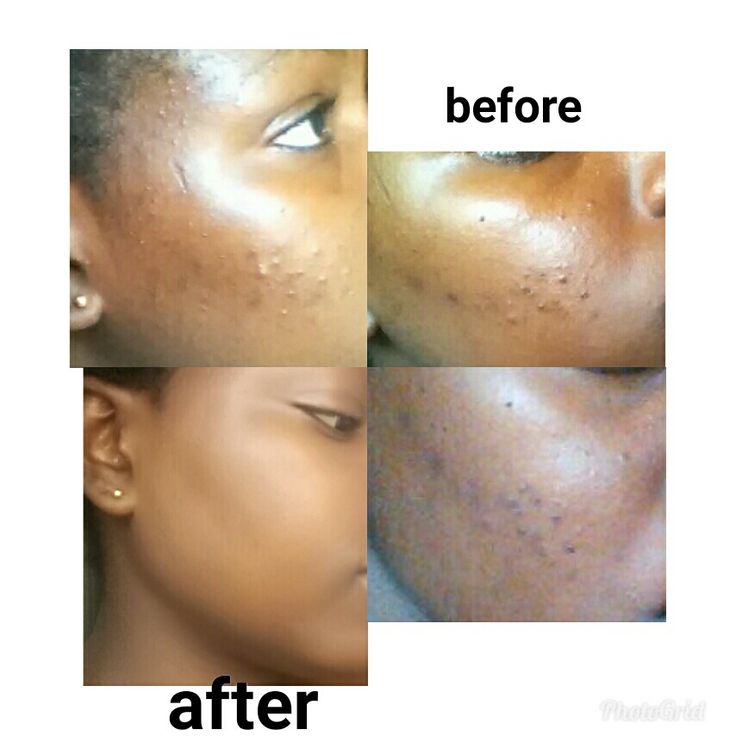
- Practice mindfulness meditation to reduce cortisol levels
- Engage in regular physical activity to boost endorphins and reduce stress
- Ensure adequate sleep to support skin repair and overall health
- Consider stress-reducing activities like yoga or tai chi
- Limit caffeine and alcohol intake, which can increase sweating and dehydration
By addressing stress, you’re not only improving your overall well-being but also supporting your skin’s ability to cope with environmental stressors.
Environmental Considerations
Your environment plays a significant role in skin health, especially when it comes to heat-related issues. Consider these factors:
- Use air conditioning or fans to maintain a cool indoor environment
- Invest in a dehumidifier for humid climates to reduce excess moisture on the skin
- Choose breathable, natural fabrics for bedding and clothing
- Be mindful of sun exposure, seeking shade during peak hours
- Consider using UV-protective clothing for extended outdoor activities
By creating a skin-friendly environment, you can significantly reduce the occurrence of sweat pimples and heat rash.
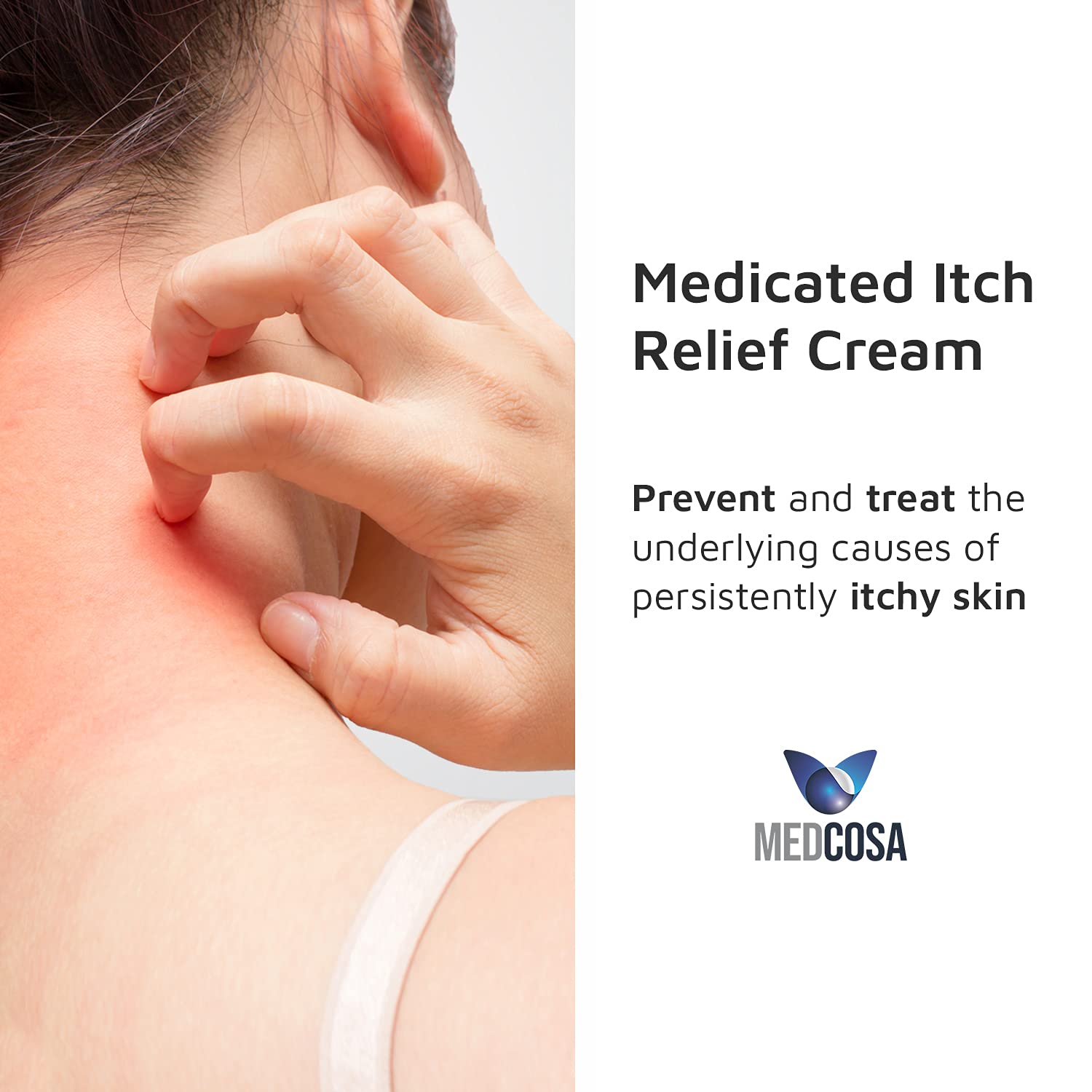
Sweat Pimples vs. Heat Rash: Causes, Treatment, and Prevention
Sweat Pimples vs. Heat Rash: Causes, Treatment, and Prevention
- Health Conditions
- Featured
- Breast Cancer
- IBD
- Migraine
- Multiple Sclerosis (MS)
- Rheumatoid Arthritis
- Type 2 Diabetes
- Articles
- Acid Reflux
- ADHD
- Allergies
- Alzheimer’s & Dementia
- Bipolar Disorder
- Cancer
- Crohn’s Disease
- Chronic Pain
- Cold & Flu
- COPD
- Depression
- Fibromyalgia
- Heart Disease
- High Cholesterol
- HIV
- Hypertension
- IPF
- Osteoarthritis
- Psoriasis
- Skin Disorders and Care
- STDs
- Featured
- Discover
- Wellness Topics
- Nutrition
- Fitness
- Skin Care
- Sexual Health
- Women’s Health
- Mental Well-Being
- Sleep
- Product Reviews
- Vitamins & Supplements
- Sleep
- Mental Health
- Nutrition
- At-Home Testing
- CBD
- Men’s Health
- Original Series
- Fresh Food Fast
- Diagnosis Diaries
- You’re Not Alone
- Present Tense
- Video Series
- Youth in Focus
- Healthy Harvest
- No More Silence
- Future of Health
- Wellness Topics
- Plan
- Health Challenges
- Mindful Eating
- Sugar Savvy
- Move Your Body
- Gut Health
- Mood Foods
- Align Your Spine
- Find Care
- Primary Care
- Mental Health
- OB-GYN
- Dermatologists
- Neurologists
- Cardiologists
- Orthopedists
- Lifestyle Quizzes
- Weight Management
- Am I Depressed? A Quiz for Teens
- Are You a Workaholic?
- How Well Do You Sleep?
- Tools & Resources
- Health News
- Find a Diet
- Find Healthy Snacks
- Drugs A-Z
- Health A-Z
- Health Challenges
- Connect
- Breast Cancer
- Inflammatory Bowel Disease
- Psoriatic Arthritis
- Migraine
- Multiple Sclerosis
- Psoriasis
Medically reviewed by Owen Kramer, M. D. — By Scott Frothingham on September 13, 2019
D. — By Scott Frothingham on September 13, 2019
If you find yourself breaking out after a particularly sweaty workout, rest assured it’s not unusual. Sweating — whether from hot weather or exercise — may contribute to a specific type of acne breakout commonly referred to as sweat pimples.
The combination of sweat, heat, and friction can lead to clogging of pores. Plus, sweat on your skin may keep acne-causing bacteria in place.
Acne breakouts from sweat are more likely to appear when sweat combines with pressure or friction from headbands, hats, clothing, or backpack straps. Medically speaking, this is known as acne mechanica.
Keep reading to learn how to treat and prevent sweat pimples, and how to tell the difference between sweat pimples and bumps caused by heat rash.
Sweat pimples should be treated like any acne breakout:
- Gently wash (not scrub) the area twice a day.
- Use non-comedogenic, non-acnegenic, oil-free products.
- Resist touching or picking.

- Use acne medication.
- Wash clothing, sheets, or pillowcases that touch your acne-prone skin.
To prevent acne breakouts due to sweating:
- Maintain your regular acne treatment routine of washing and medication.
- After periods of heavy sweating, shower with antibacterial soap.
- Wash your workout clothing regularly.
- Avoid tight-fitting clothes and accessories.
- When possible, seek cooler areas with lower humidity, particularly during the hottest part of the day.
- If possible, take special care to avoid tight clothing or equipment that may be contributing to the breakout (e.g. a chinstrap causing chin acne breakouts).
Another thing to consider is that the bumps on your skin may be a symptom of heat rash, rather than an acne breakout.
Heat rashes are caused by excessive sweating, typically during hot, humid weather. When blocked sweat ducts trap perspiration under your skin, the result is heat rash.
Heat rash symptoms can look like pimples
The two most common types of heat rash, miliaria crystallina and miliaria rubra, can look very similar to acne. In fact, experts at the University of Pittsburgh describes heat rash as looking like “a cluster of red bumps that resemble pimples.”
In fact, experts at the University of Pittsburgh describes heat rash as looking like “a cluster of red bumps that resemble pimples.”
- Miliaria crystallina (sudamina) can appear as small white or clear, fluid-filled bumps on your skin’s surface.
- Miliaria rubra (prickly heat) can appear as red bumps on your skin.
Typically, miliaria crystallina is not painful or itchy, while miliaria rubra can cause prickly or itchy sensations.
Heat rashes typically appear on the back, chest, and neck.
The treatment for mild heat rash is to remove yourself from exposure to excessive heat. Your rash will most likely clear once your skin is cool.
If the rash is severe, your doctor may recommend topical treatments, such as:
- calamine lotion
- anhydrous lanolin
- topical steroids
To avoid heat rash, take steps before exposing yourself to situations that might result in heavy sweating. For example, don’t exercise outdoors during the hottest part of the day.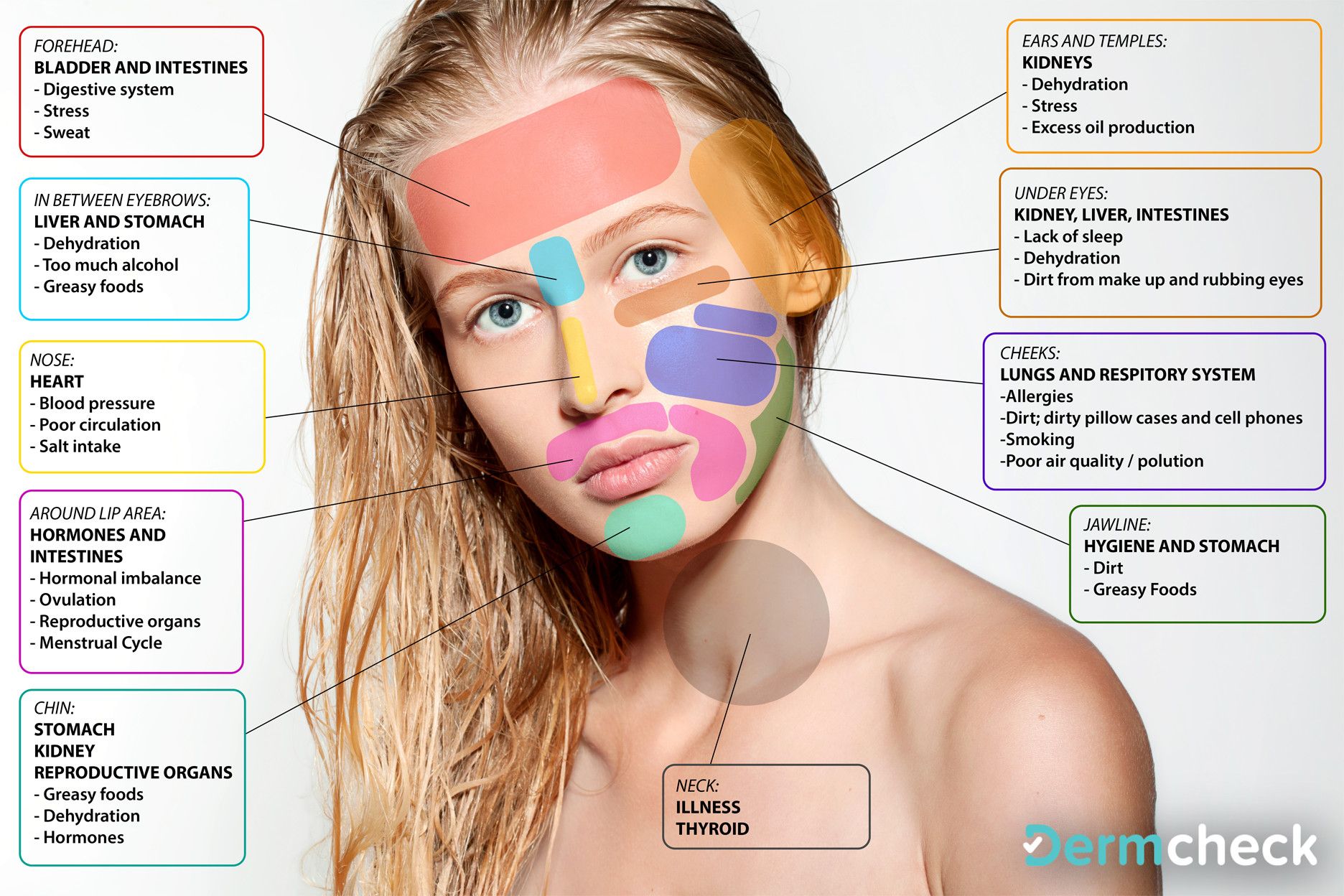
Or, in an especially hot, humid environment, try working out first thing in the morning, before the sun has had a chance to heat things up.
Additional suggestions include:
- Wear soft, loose-fitting, lightweight cotton or moisture-wicking clothing when the weather is hot.
- Seek shade or air-conditioning during hot weather.
- When showering or bathing, use a soap that doesn’t dry your skin and cool water.
- Allow your skin to air dry as opposed to using a towel.
- Avoid using ointments that can block pores, such as those containing mineral oil or petroleum.
- Make sure your sleeping area is well ventilated and cool.
Although excessive sweating can contribute to acne breakouts, your sweat pimples could also be a symptom of heat rash.
You might be able to address both conditions by cooling off and:
- avoiding places and activities that increase sweating
- washing — but not over-washing or scrubbing — your skin
- using gentle antibacterial soaps and non-comedogenic products
- cleaning your clothing, bedding, and other materials that come in contact with your skin
- wearing loose-fitting, lightweight clothing when the weather is hot
Last medically reviewed on September 13, 2019
How we reviewed this article:
Healthline has strict sourcing guidelines and relies on peer-reviewed studies, academic research institutions, and medical associations. We avoid using tertiary references. You can learn more about how we ensure our content is accurate and current by reading our editorial policy.
We avoid using tertiary references. You can learn more about how we ensure our content is accurate and current by reading our editorial policy.
- 10 things to try when acne won’t clear. (n.d.).
aad.org/public/diseases/acne-and-rosacea/10-things-to-try-when-acne-wont-clear - 12 tips to combat acne. (n.d.).
rush.edu/health-wellness/discover-health/12-tips-combat-acne - Acne. (n.d.).
uhs.wisc.edu/medical/common-student-concerns/acne/ - Heat rash: What causes heat rash? (2018).
share.upmc.com/2018/06/what-is-heat-rash/ - Mayo Clinic Staff. (2018). Heat rash.
mayoclinic.org/diseases-conditions/heat-rash/symptoms-causes/syc-20373276 - Miliaria. (n.d.).
aocd.org/page/Miliaria
Share this article
Medically reviewed by Owen Kramer, M.D. — By Scott Frothingham on September 13, 2019
Read this next
- 13 Acne Soaps to Calmly and Gently Fade Breakouts
Medically reviewed by Bukky Aremu, APRN
Dry, sensitive, oily, combination, or normal skin — these 14 soaps will have your back when it comes to combating bacterial and inflamed pimples.

READ MORE
- 10 Acne Patches to Try: From Medicated to Micro-Needle
Medically reviewed by Bukky Aremu, APRN
Are you looking to treat your acne with acne patches but aren’t sure which type is the best for you? Use this guide to get you started.
READ MORE
- What Causes Acne Papules, and How Are They Treated?
Medically reviewed by Cynthia Cobb, DNP, APRN, WHNP-BC, FAANP
A papule appears on the skin as a tiny, raised, red bump. It’s caused by excess oil and skin cells clogging a pore. Papules have no visible pus.
READ MORE
- Stress Rash: Tips for Identification, Treatment, and More
A stress-induced rash isn’t always a cause for concern, but there are other rashes that may look similar. We’ll tell you how to identify and treat a…
READ MORE
- 12 Ways to Get Rid of Blackheads
Medically reviewed by Cynthia Cobb, DNP, APRN, WHNP-BC, FAANP
It may be tempting to pick and poke at blackheads, but this can leave your skin worse than before.
 Here’s how to get rid of blackheads in 12 safer…
Here’s how to get rid of blackheads in 12 safer…READ MORE
- Can Salicylic Acid Help Treat Acne?
Medically reviewed by Cynthia Cobb, DNP, APRN, WHNP-BC, FAANP
Salicylic acid is widely available and used regularly for reducing acne. Learn about its benefits, proper dosages, use when pregnant, and potential…
READ MORE
- The Ultimate Guide to Period-Related Breakouts
Medically reviewed by Sara Perkins, MD
Nothing makes an already crummy situation worse quite like period acne. Learn how to deal with everything from painful chin cysts to vulvar acne.
READ MORE
- How Many Different Kinds of Facial Blemishes Are There?
Medically reviewed by Cynthia Cobb, DNP, APRN, WHNP-BC, FAANP
Whiteheads, blackheads, pimples, and pustules are just a few of the many types of blemishes that can appear on the skin. Find out what causes…
READ MORE
Sweat Pimples vs. Heat Rash: Causes, Treatment, and Prevention
Sweat Pimples vs. Heat Rash: Causes, Treatment, and Prevention
Heat Rash: Causes, Treatment, and Prevention
- Health Conditions
- Featured
- Breast Cancer
- IBD
- Migraine
- Multiple Sclerosis (MS)
- Rheumatoid Arthritis
- Type 2 Diabetes
- Articles
- Acid Reflux
- ADHD
- Allergies
- Alzheimer’s & Dementia
- Bipolar Disorder
- Cancer
- Crohn’s Disease
- Chronic Pain
- Cold & Flu
- COPD
- Depression
- Fibromyalgia
- Heart Disease
- High Cholesterol
- HIV
- Hypertension
- IPF
- Osteoarthritis
- Psoriasis
- Skin Disorders and Care
- STDs
- Featured
- Discover
- Wellness Topics
- Nutrition
- Fitness
- Skin Care
- Sexual Health
- Women’s Health
- Mental Well-Being
- Sleep
- Product Reviews
- Vitamins & Supplements
- Sleep
- Mental Health
- Nutrition
- At-Home Testing
- CBD
- Men’s Health
- Original Series
- Fresh Food Fast
- Diagnosis Diaries
- You’re Not Alone
- Present Tense
- Video Series
- Youth in Focus
- Healthy Harvest
- No More Silence
- Future of Health
- Wellness Topics
- Plan
- Health Challenges
- Mindful Eating
- Sugar Savvy
- Move Your Body
- Gut Health
- Mood Foods
- Align Your Spine
- Find Care
- Primary Care
- Mental Health
- OB-GYN
- Dermatologists
- Neurologists
- Cardiologists
- Orthopedists
- Lifestyle Quizzes
- Weight Management
- Am I Depressed? A Quiz for Teens
- Are You a Workaholic?
- How Well Do You Sleep?
- Tools & Resources
- Health News
- Find a Diet
- Find Healthy Snacks
- Drugs A-Z
- Health A-Z
- Health Challenges
- Connect
- Breast Cancer
- Inflammatory Bowel Disease
- Psoriatic Arthritis
- Migraine
- Multiple Sclerosis
- Psoriasis
Medically reviewed by Owen Kramer, M.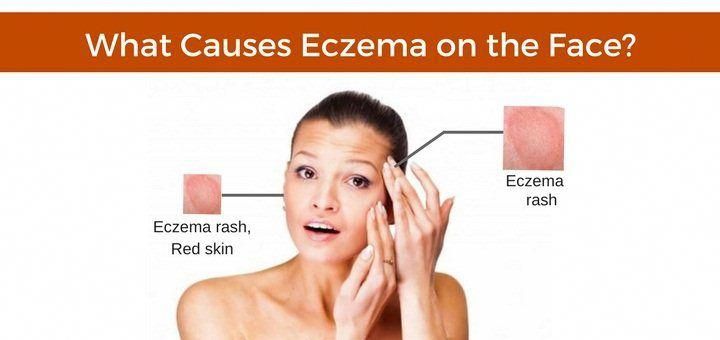 D. — By Scott Frothingham on September 13, 2019
D. — By Scott Frothingham on September 13, 2019
If you find yourself breaking out after a particularly sweaty workout, rest assured it’s not unusual. Sweating — whether from hot weather or exercise — may contribute to a specific type of acne breakout commonly referred to as sweat pimples.
The combination of sweat, heat, and friction can lead to clogging of pores. Plus, sweat on your skin may keep acne-causing bacteria in place.
Acne breakouts from sweat are more likely to appear when sweat combines with pressure or friction from headbands, hats, clothing, or backpack straps. Medically speaking, this is known as acne mechanica.
Keep reading to learn how to treat and prevent sweat pimples, and how to tell the difference between sweat pimples and bumps caused by heat rash.
Sweat pimples should be treated like any acne breakout:
- Gently wash (not scrub) the area twice a day.
- Use non-comedogenic, non-acnegenic, oil-free products.
- Resist touching or picking.

- Use acne medication.
- Wash clothing, sheets, or pillowcases that touch your acne-prone skin.
To prevent acne breakouts due to sweating:
- Maintain your regular acne treatment routine of washing and medication.
- After periods of heavy sweating, shower with antibacterial soap.
- Wash your workout clothing regularly.
- Avoid tight-fitting clothes and accessories.
- When possible, seek cooler areas with lower humidity, particularly during the hottest part of the day.
- If possible, take special care to avoid tight clothing or equipment that may be contributing to the breakout (e.g. a chinstrap causing chin acne breakouts).
Another thing to consider is that the bumps on your skin may be a symptom of heat rash, rather than an acne breakout.
Heat rashes are caused by excessive sweating, typically during hot, humid weather. When blocked sweat ducts trap perspiration under your skin, the result is heat rash.
Heat rash symptoms can look like pimples
The two most common types of heat rash, miliaria crystallina and miliaria rubra, can look very similar to acne.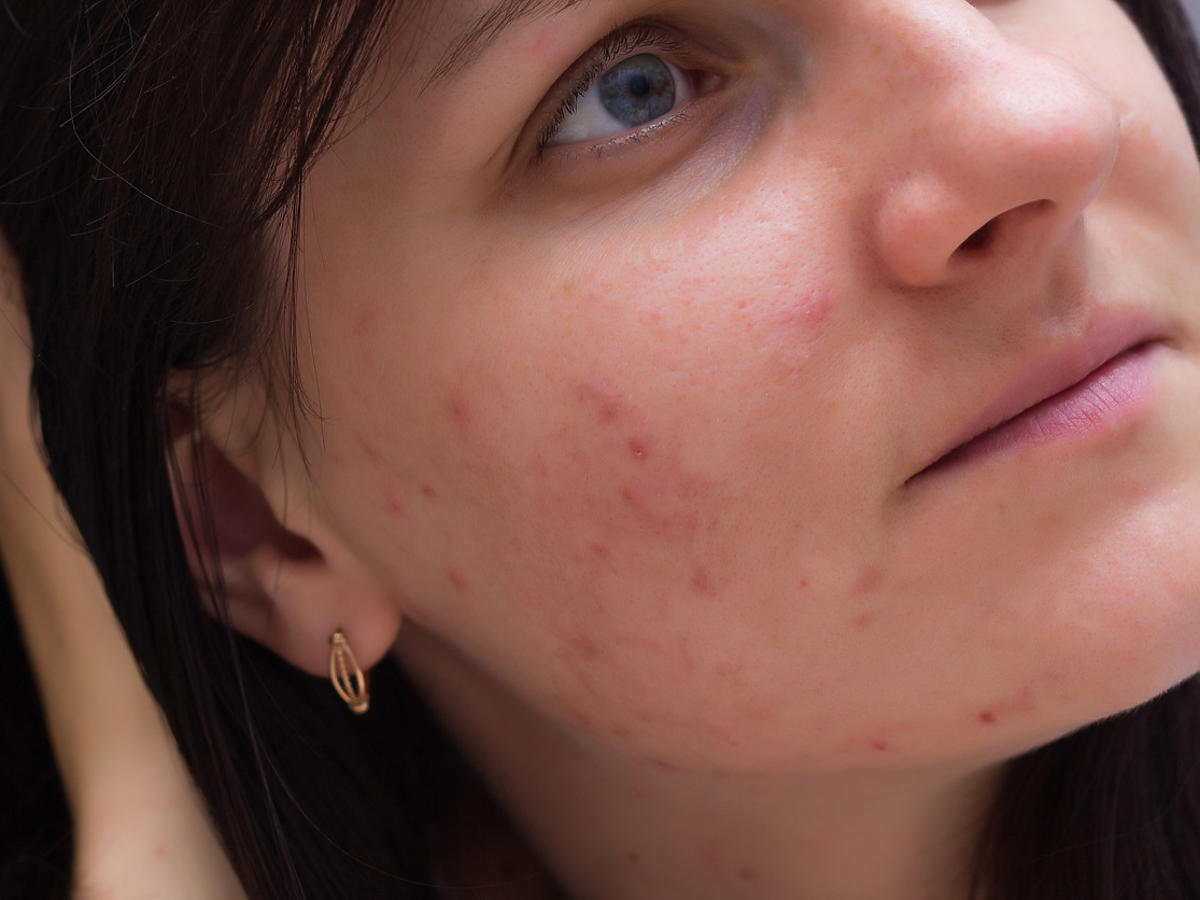 In fact, experts at the University of Pittsburgh describes heat rash as looking like “a cluster of red bumps that resemble pimples.”
In fact, experts at the University of Pittsburgh describes heat rash as looking like “a cluster of red bumps that resemble pimples.”
- Miliaria crystallina (sudamina) can appear as small white or clear, fluid-filled bumps on your skin’s surface.
- Miliaria rubra (prickly heat) can appear as red bumps on your skin.
Typically, miliaria crystallina is not painful or itchy, while miliaria rubra can cause prickly or itchy sensations.
Heat rashes typically appear on the back, chest, and neck.
The treatment for mild heat rash is to remove yourself from exposure to excessive heat. Your rash will most likely clear once your skin is cool.
If the rash is severe, your doctor may recommend topical treatments, such as:
- calamine lotion
- anhydrous lanolin
- topical steroids
To avoid heat rash, take steps before exposing yourself to situations that might result in heavy sweating. For example, don’t exercise outdoors during the hottest part of the day.:max_bytes(150000):strip_icc()/Teen-with-Mild-Acne-BSIP-UIG-Getty-Images-569fccc53df78cafda9e6223.jpg)
Or, in an especially hot, humid environment, try working out first thing in the morning, before the sun has had a chance to heat things up.
Additional suggestions include:
- Wear soft, loose-fitting, lightweight cotton or moisture-wicking clothing when the weather is hot.
- Seek shade or air-conditioning during hot weather.
- When showering or bathing, use a soap that doesn’t dry your skin and cool water.
- Allow your skin to air dry as opposed to using a towel.
- Avoid using ointments that can block pores, such as those containing mineral oil or petroleum.
- Make sure your sleeping area is well ventilated and cool.
Although excessive sweating can contribute to acne breakouts, your sweat pimples could also be a symptom of heat rash.
You might be able to address both conditions by cooling off and:
- avoiding places and activities that increase sweating
- washing — but not over-washing or scrubbing — your skin
- using gentle antibacterial soaps and non-comedogenic products
- cleaning your clothing, bedding, and other materials that come in contact with your skin
- wearing loose-fitting, lightweight clothing when the weather is hot
Last medically reviewed on September 13, 2019
How we reviewed this article:
Healthline has strict sourcing guidelines and relies on peer-reviewed studies, academic research institutions, and medical associations. We avoid using tertiary references. You can learn more about how we ensure our content is accurate and current by reading our editorial policy.
We avoid using tertiary references. You can learn more about how we ensure our content is accurate and current by reading our editorial policy.
- 10 things to try when acne won’t clear. (n.d.).
aad.org/public/diseases/acne-and-rosacea/10-things-to-try-when-acne-wont-clear - 12 tips to combat acne. (n.d.).
rush.edu/health-wellness/discover-health/12-tips-combat-acne - Acne. (n.d.).
uhs.wisc.edu/medical/common-student-concerns/acne/ - Heat rash: What causes heat rash? (2018).
share.upmc.com/2018/06/what-is-heat-rash/ - Mayo Clinic Staff. (2018). Heat rash.
mayoclinic.org/diseases-conditions/heat-rash/symptoms-causes/syc-20373276 - Miliaria. (n.d.).
aocd.org/page/Miliaria
Share this article
Medically reviewed by Owen Kramer, M.D. — By Scott Frothingham on September 13, 2019
Read this next
- 13 Acne Soaps to Calmly and Gently Fade Breakouts
Medically reviewed by Bukky Aremu, APRN
Dry, sensitive, oily, combination, or normal skin — these 14 soaps will have your back when it comes to combating bacterial and inflamed pimples.

READ MORE
- 10 Acne Patches to Try: From Medicated to Micro-Needle
Medically reviewed by Bukky Aremu, APRN
Are you looking to treat your acne with acne patches but aren’t sure which type is the best for you? Use this guide to get you started.
READ MORE
- What Causes Acne Papules, and How Are They Treated?
Medically reviewed by Cynthia Cobb, DNP, APRN, WHNP-BC, FAANP
A papule appears on the skin as a tiny, raised, red bump. It’s caused by excess oil and skin cells clogging a pore. Papules have no visible pus.
READ MORE
- Stress Rash: Tips for Identification, Treatment, and More
A stress-induced rash isn’t always a cause for concern, but there are other rashes that may look similar. We’ll tell you how to identify and treat a…
READ MORE
- 12 Ways to Get Rid of Blackheads
Medically reviewed by Cynthia Cobb, DNP, APRN, WHNP-BC, FAANP
It may be tempting to pick and poke at blackheads, but this can leave your skin worse than before.
 Here’s how to get rid of blackheads in 12 safer…
Here’s how to get rid of blackheads in 12 safer…READ MORE
- Can Salicylic Acid Help Treat Acne?
Medically reviewed by Cynthia Cobb, DNP, APRN, WHNP-BC, FAANP
Salicylic acid is widely available and used regularly for reducing acne. Learn about its benefits, proper dosages, use when pregnant, and potential…
READ MORE
- The Ultimate Guide to Period-Related Breakouts
Medically reviewed by Sara Perkins, MD
Nothing makes an already crummy situation worse quite like period acne. Learn how to deal with everything from painful chin cysts to vulvar acne.
READ MORE
- How Many Different Kinds of Facial Blemishes Are There?
Medically reviewed by Cynthia Cobb, DNP, APRN, WHNP-BC, FAANP
Whiteheads, blackheads, pimples, and pustules are just a few of the many types of blemishes that can appear on the skin. Find out what causes…
READ MORE
Why heat causes acne and what to do about it
Fighting imperfections
Tags:
Skin care
summer care
Hot summer is not only an excuse to put on your favorite light dresses, but also a reason for the deterioration of the skin condition.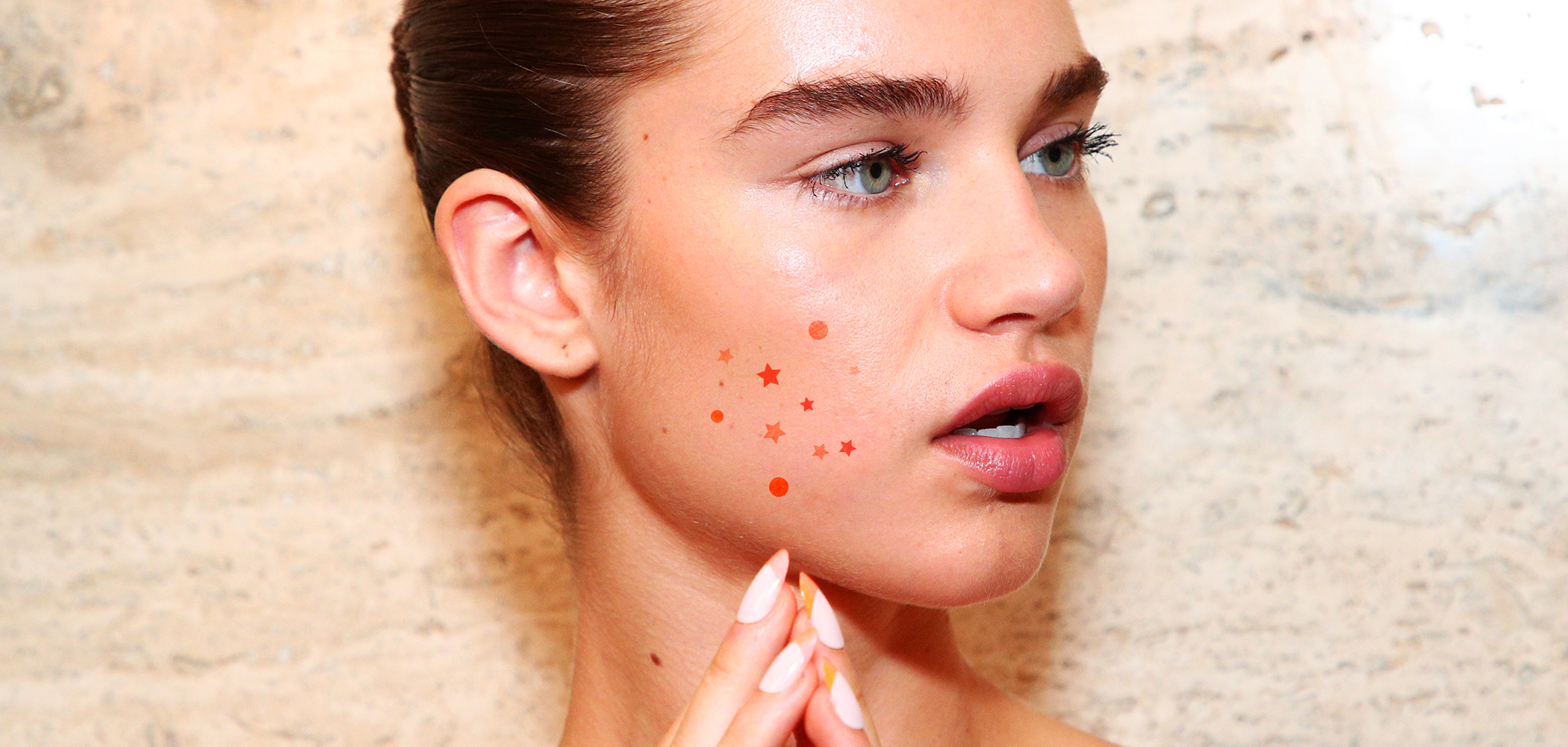 When the thermometer crosses the 25°C mark, acne and irritation worsen not only in those whose skin is prone to it, but also in those who do not encounter such a problem at all throughout the year. And since we have not yet learned how to influence the weather, we have to restructure our skin care. Here’s what you can do to deal with acne in the heat.
When the thermometer crosses the 25°C mark, acne and irritation worsen not only in those whose skin is prone to it, but also in those who do not encounter such a problem at all throughout the year. And since we have not yet learned how to influence the weather, we have to restructure our skin care. Here’s what you can do to deal with acne in the heat.
Why does acne appear in hot weather?
To begin with, let’s figure out what happens in the summer that even the owners of the most even and clean skin get acne. Firstly, at high temperatures, sweating increases significantly. Wet skin becomes more vulnerable, more dust and dirt “sticks” to it, which, together with sweat, ends up in the pores. And if on top, to get rid of the oily sheen, you also cover it all with powder, the appearance of acne cannot be avoided. In addition, drying in the sun, sweat leaves small particles of salt on the skin, which cause additional irritation.
In addition to sweat, the sun itself has a bad effect on the condition of the skin. There is a common myth that sunburn dries up acne and helps get rid of them, but this is not at all true. Ultraviolet has a detrimental effect on the skin, not only destroying collagen, but also seriously injuring the protective barrier. Thus, it becomes easier for bacteria to penetrate the skin and cause inflammation.
There is a common myth that sunburn dries up acne and helps get rid of them, but this is not at all true. Ultraviolet has a detrimental effect on the skin, not only destroying collagen, but also seriously injuring the protective barrier. Thus, it becomes easier for bacteria to penetrate the skin and cause inflammation.
What to do about it?
So, as we said above, ultraviolet radiation adversely affects the protective barrier of the skin, which means you need to protect yourself from it. Sunscreen for the summer should be chosen with a protection degree of at least SPF50, while trying to use light, moisturizing products that suit your skin type. Otherwise, the product will certainly protect you from the sun, but the skin condition may worsen. We talked about how to choose the right sunscreen here.
Don’t forget to cleanse and tone your skin in the morning before sunscreen and in the evening after. If you have such an opportunity, it is better to wash your face also in the middle of the day, before that carefully removing the remnants of SPF from the skin, and then renew it. In addition, if you really want to get rid of oily sheen, you should not use powder: it will only clog pores more, mixing with sweat, dirt and sunscreen residue. For this purpose, matting wipes are better suited.
In addition, if you really want to get rid of oily sheen, you should not use powder: it will only clog pores more, mixing with sweat, dirt and sunscreen residue. For this purpose, matting wipes are better suited.
If in hot weather inflammations appear not on the face, but on the body, this can also be fought. Firstly, try not to wear synthetic fabrics during the hottest days, they do not breathe and provoke even more inflammation. The same goes for tight-fitting clothing. A loose-fitting dress or suit made of linen or cotton is the best thing to wear in thirty-degree fat. By the way, the same applies to underwear. After each shower, do not forget to carefully moisturise – microcracks form in dry skin, which are easier for bacteria to penetrate. In addition, special lotions with BHA acids can be used in the most “dangerous” areas.
Discussion of skin problems with a dermatovenereologist Euromed clinic
In summer, in the heat, various dermatological diseases often appear or worsen. Who among us has not experienced irritation, reddening of the skin, incomprehensible rashes or an allergic reaction to plants or insect stings in the summer? Together with Elena Anatolyevna FEOKTISTOVA, a dermatovenereologist at the Euromed clinic, we talk about the most common “summer” skin troubles.
Who among us has not experienced irritation, reddening of the skin, incomprehensible rashes or an allergic reaction to plants or insect stings in the summer? Together with Elena Anatolyevna FEOKTISTOVA, a dermatovenereologist at the Euromed clinic, we talk about the most common “summer” skin troubles.
In the warm months, new disease-provoking factors appear in our lives: heat and, as a result, increased sweating, active solar radiation, sudden temperature changes from hot to cool, a large number of plants and insects with which we come into daily contact. And all this can lead to certain problems that appear on our skin.
Acne Mallorca
Mallorca acne is sometimes also referred to as “summer acne”. Hot days provoke increased sweating, the sun dries the skin, and as a result, the sebaceous glands become clogged, leading to acne. A provoking factor for the appearance of such rashes can also be cosmetic products that clog the skin.
Most often, rashes are localized on the chest and between the shoulder blades – there are many sebaceous glands in these places, and sweat is concentrated here.
Symptoms
Acne that appears in the summer and disappears on its own in the winter.
Bacterial infections
Against the background of excessive sweating, streptococcal and staphylococcal infections may appear.
Streptococci and staphylococci are bacteria that cause the development of many diseases, and not only dermatological ones. Streptococcal and staphylococcal infections are very diverse: they can be skin, respiratory, digestive, genital, etc. Diseases caused by a bacterial infection are usually severe and can lead to complications.
Staphylococcal infection is transmitted in various ways: food, contact, aerosol, airborne dust. To prevent the spread of bacteria, it is important to observe personal hygiene, thoroughly wash hands, food, dishes, children’s toys, and regularly do wet cleaning in the room.
Staphylococci can persist in the food environment for a long time, animal products are at risk of infection (animals also suffer from staphylococcal infection): in non-boiled milk, not fried meat, soft-boiled eggs, in fermented milk products, in ice cream, in confectionery.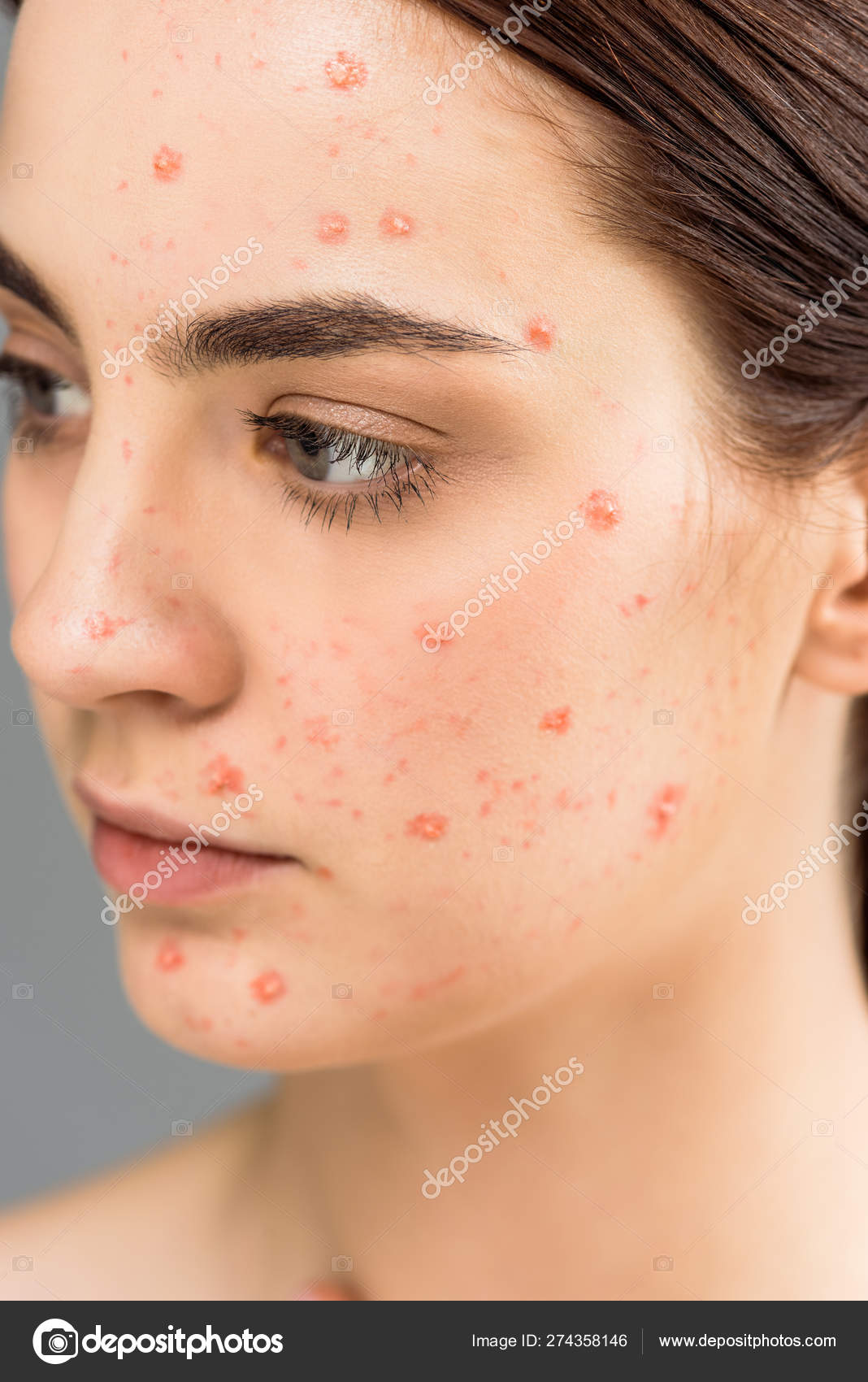
Symptoms of bacterial infection
Often, the presence of a staphylococcal or streptococcal infection can be judged by skin lesions. A bacterial infection can cause the appearance of boils, phlegmon, abscesses, sycosis (inflammation of the hair follicles), pyoderma (purulent skin lesions), burn-like skin syndrome, etc. Streptococcal infection can cause erysipelas, which is characterized by severe itching, burning, redness of the skin.
It is important to understand that these infections affect more than just the skin and can present with a variety of other symptoms.
Herpes
Changes in temperature, when we go into an air-conditioned room from the heat or sit in a cool car or bus, can lead to an exacerbation of herpes, both simple and herpes zoster.
Herpes is a viral, highly contagious disease, manifested by the appearance of small, painful blisters on the skin. The herpes virus can live in the human body for years, and manifest itself with a decrease in immunity, hypothermia, and stress. There is simple and herpes zoster.
There is simple and herpes zoster.
Simple is localized on the lips, on the genitals. It can go further and cause inflammation of the oral mucosa – stomatitis, which in turn can turn into herpetic sore throat.
Herpes zoster is a relative of chickenpox. This disease is caused by the same virus. That is, after a person has had chickenpox, a virus could lurk in his body, and in such a “sleep” mode, the virus can exist in the body for decades! And manifest itself at the time of weakening of the immune system, stress, overwork, etc. And herpes zoster can lead to the development of herpes zoster – an extremely unpleasant and painful disease and herpetic neuralgia – a very painful condition.
Symptoms of herpes
-
Small vesicular, filled with turbid liquid, painful rashes on the lips, in the mouth, on the genitals.
Pain, itching in places of rashes.
Painful eruptions on chest, on one side, along ribs; sometimes on the neck.

Severe intercostal pain (with herpes zoster).
Post-traumatic microbial eczema
This disease can develop against the background of insect bites, mosquitoes, midges, cuts, abrasions, chafed legs, sunburn and other skin lesions that are so frequent in summer. Individual reaction of the skin to damage, especially against the background of reduced immunity or hereditary predisposition, or a metabolic failure, etc. can lead to microbial eczema.
Symptoms of post-traumatic microbial eczema
itching;
swelling and redness of the skin;
rash in the form of bubbles, sometimes filled with pus;
the formation of crusts in the places of opening of the bubbles.
If left untreated, post-traumatic microbial eczema becomes chronic.
Contact dermatitis
Contact dermatitis is the general name for dermatological disorders resulting from direct skin exposure to irritating chemicals. There are three types of this disease:
There are three types of this disease:
Simple contact dermatitis, which develops as a result of exposure to the skin of chemical irritants (acids, alkalis).
Allergic contact dermatitis can be caused by contact with metals, latex, dyes, plants, cosmetics, medicinal ointments, sunscreens.
Phototoxic contact dermatitis is an individual reaction to ultraviolet light, the so-called sun allergy.
Symptoms
contact dermatitis develops exclusively on the area of the skin that has been in contact with the allergen. Symptoms may not appear immediately, but several days after exposure.
itching
local redness, swelling
eruptions in the form of blisters filled with liquid
erosion
Erythematous intertrigo
This is a superficial inflammatory lesion of the skin, usually develops in places of skin folds, adjacent surfaces. Most often this disease occurs in children. The main causes of the development of the disease are excessive sweating, fungal and streptococcal infections, and metabolic disorders.
Most often this disease occurs in children. The main causes of the development of the disease are excessive sweating, fungal and streptococcal infections, and metabolic disorders.
Symptoms
redness of the skin (without sharp borders with a healthy area)
blistering rash
abrasions with indistinct outlines, cracks
edema
pain, burning in places of skin damage
bad smell
If you notice any of the above symptoms, do not delay – contact a dermatologist! Most diseases, while seemingly harmless, do not go away on their own, and can either flow into a chronic form or provoke the development of more severe conditions. Modern medicine allows you to quickly diagnose the disease, and in a short time to help you get rid of it.
Do you know?
An uneven tan may indicate that you have a fungal infection – pityriasis (varicolored) lichen!
This is a chronic fungal infection that affects the superficial layers of the skin.

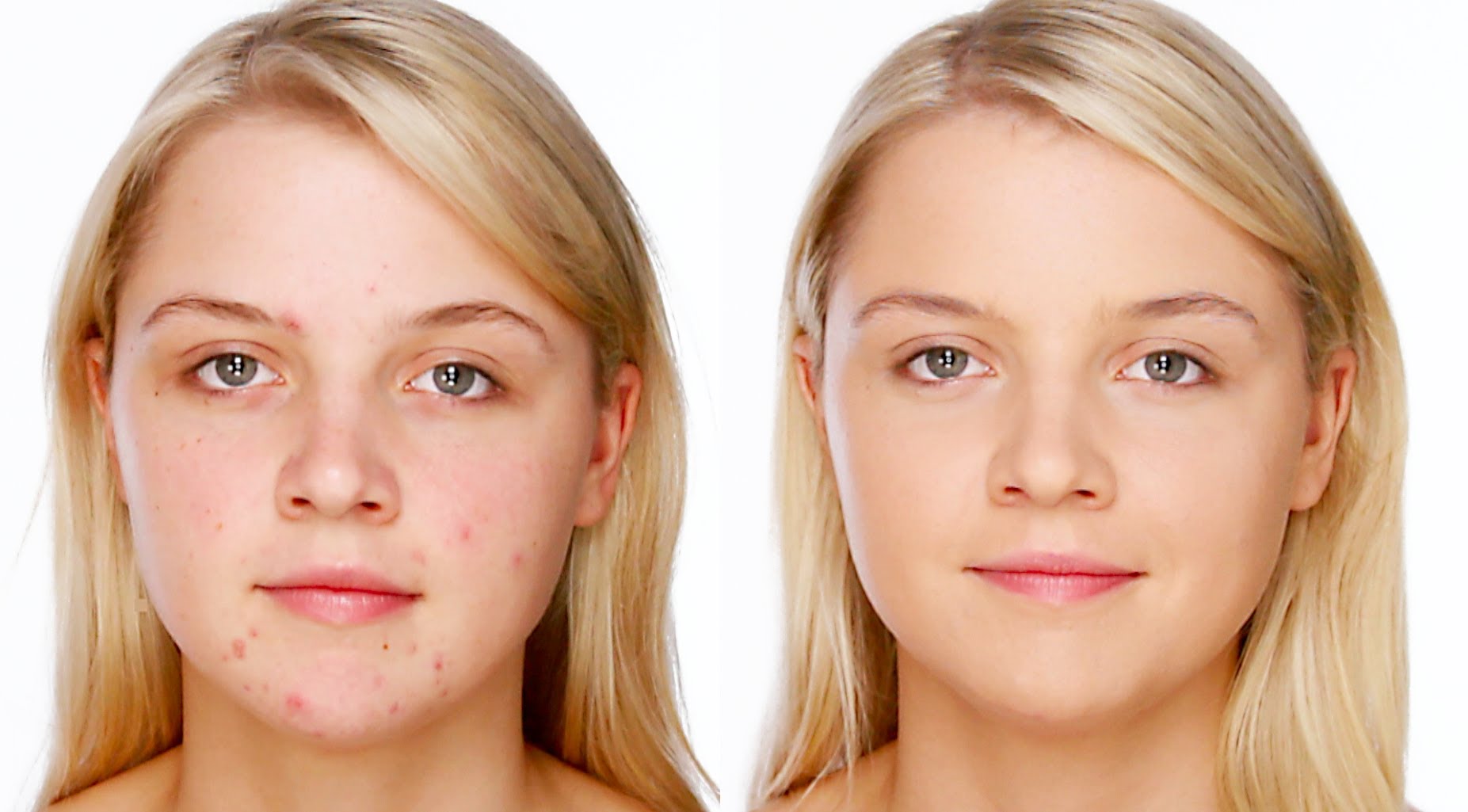
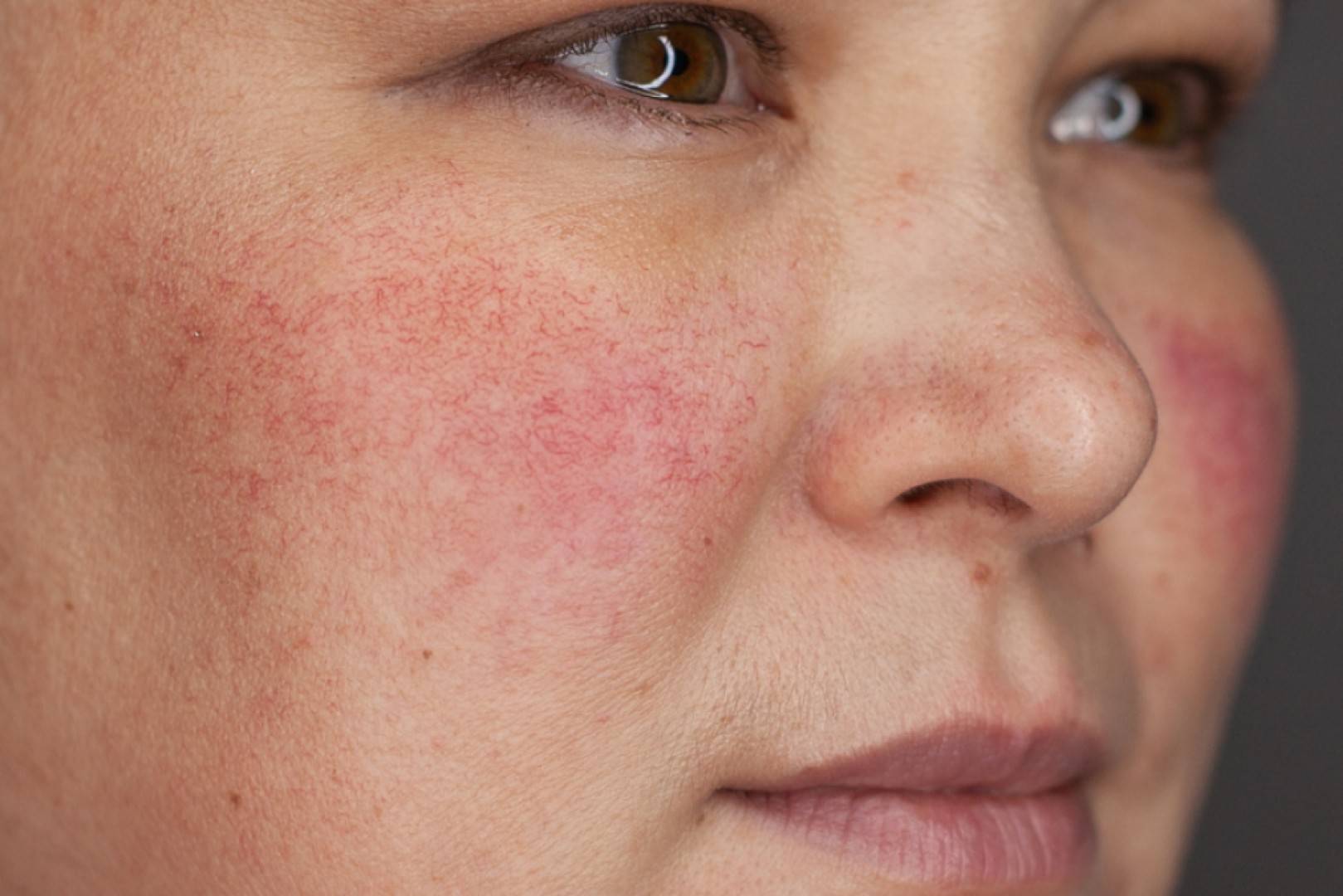
 Here’s how to get rid of blackheads in 12 safer…
Here’s how to get rid of blackheads in 12 safer…
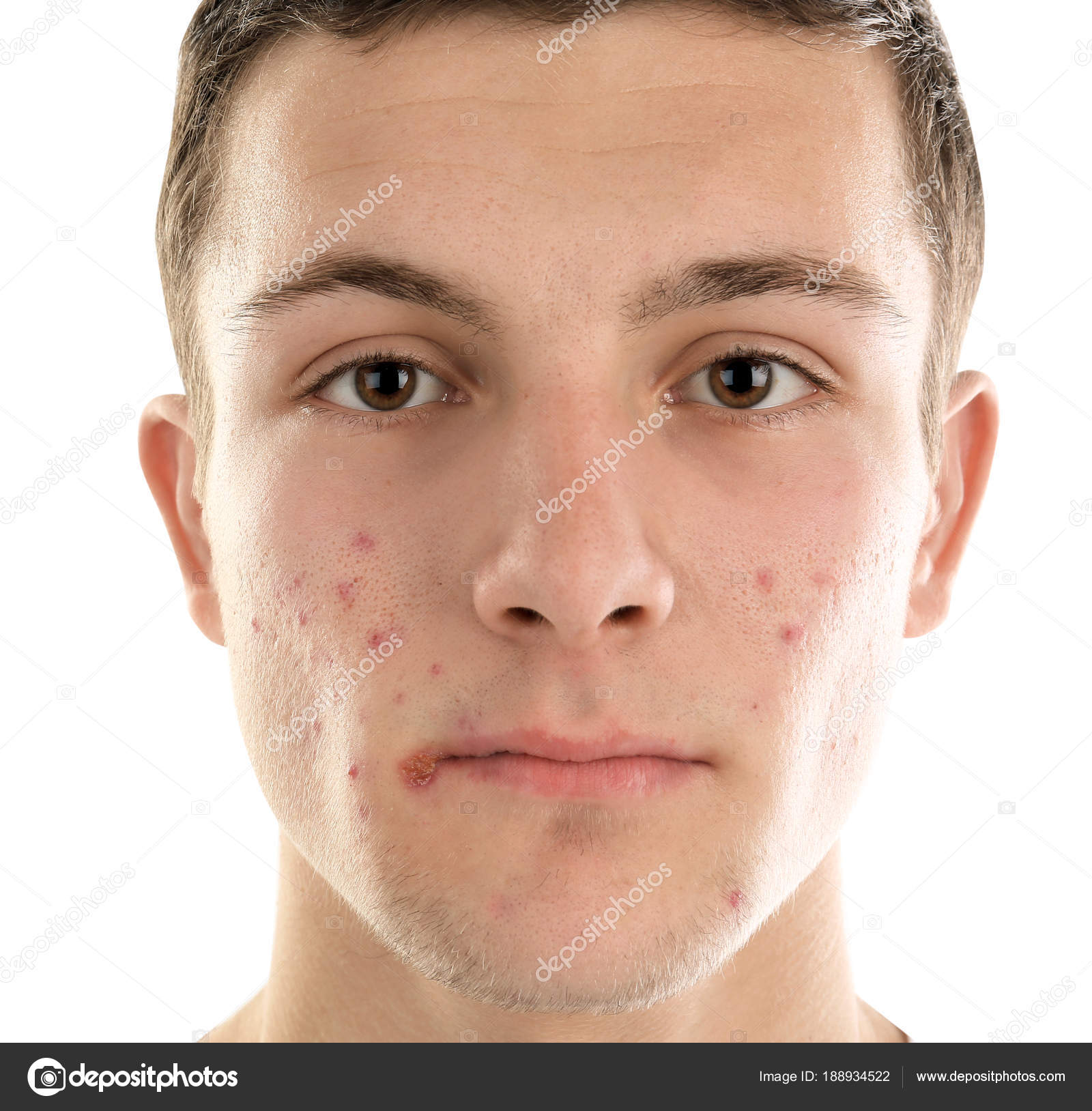
 Here’s how to get rid of blackheads in 12 safer…
Here’s how to get rid of blackheads in 12 safer…